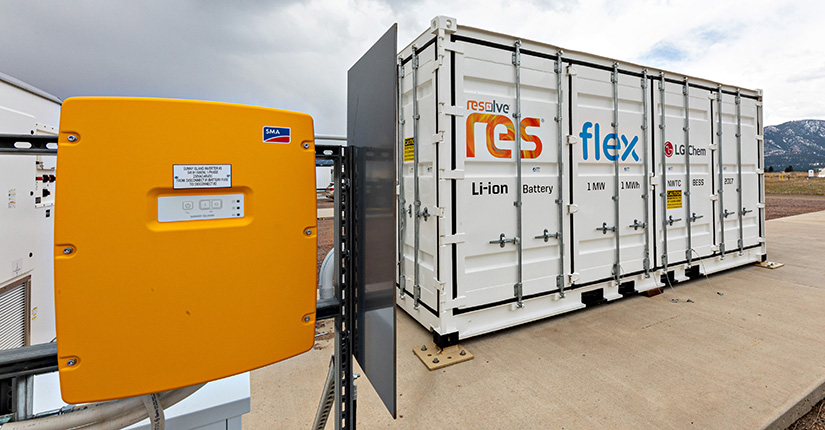From Minor Player to Major League: Moving Beyond 4-Hour Energy Storage
New Report Highlights Challenges and Opportunities To Increase Value of Longer-Duration Energy Storage

Energy storage with more than four hours of duration could play an important role in integrating lots of renewable energy onto the U.S. power grid, but it makes up less than 10% of the storage deployed since 2010. That may change with a potential shift to net winter demand peaks, according to a new publication by the National Renewable Energy Laboratory (NREL).
This work builds on NREL's multiyear Storage Futures Study (SFS) that analyzed the fundamental role of energy storage in maintaining a resilient, flexible, and low-carbon U.S. power grid through the year 2050. The Storage Futures Study identified economic opportunities for hundreds of gigawatts of six to 10-hour storage even without new policies targeted at reducing carbon emissions.
"Longer-duration energy storage may lead to better grid resilience," said Paul Denholm, NREL model engineering senior research fellow and lead author. "There's an upside to developing and deploying greater storage, whether that value is in the ability to store more renewable energy or meeting winter energy demand."
Why 4-Hour Storage Has Been the Go-to Choice
Four-hour energy storage has historically been well suited for hot summer days in the United States, when demand peaks are shorter and energy storage is complemented with lots of low-cost solar energy. This has led to markets incentivizing four-hour duration while disincentivizing longer durations. Several wholesale market regions have adopted a fixed "four-hour capacity rule" that fully compensates storage with at least four hours of duration. That means a six-hour battery does not receive any more revenue than a four-hour battery. As a result, about 40% of new storage capacity in 2021 and 2022 was exactly four hours of duration.
On top of the fixed capacity rule, while markets value energy storage's ability to store low-cost off-peak energy and sell stored energy during times of higher prices—also called time-shifting or arbitrage value—there is lower incremental value for this service for duration beyond four hours. The high value proposition and low storage costs of lithium-ion batteries has provided little economic incentive for development of energy storage greater than four hours, especially in the summer.
Increasing Value With Increasing Winter Peaks
As extreme weather conditions increase and we electrify more building heating systems, peak demand is becoming more significant in the winter than in the summer. Demand peaks in winter also tend to be longer. This is particularly true at night when solar energy is not available. Solar deployment will accelerate the shift to net winter peaks through much of the country, adding an incentive for longer-duration storage development. Some regions of the United States are already experiencing winter peaking.
"Energy storage could help meet increasing winter demand," Denholm said. "Increased storage can also support transmission and resilience, further increasing the value of developing energy storage with more than four hours of capacity."
Shifting the value proposition of longer-duration storage also means advancing storage technologies and highlighting the value of additional storage capacity. Various technologies—such as thermal storage or next-generation compressed-air energy storage—have the potential to reach cost parity with Li-ion batteries and longer service lifetimes. New battery storage technologies are another avenue for development. Emerging technologies must compete with the Li-ion technology market, which is growing due to the popularity of electric vehicles, meaning those new technologies will require deployment at scale.
"We have promising technologies that, with development, can meet winter demand peaks and compete with lithium-ion technology," Denholm said. "Reliability of the grid is the goal—greater storage can help us get there."
Read the full technical report and learn more about NREL’s Storage Futures Study. Learn more about NREL's energy analysis research, and sign up for NREL's energy analysis newsletter.
Last Updated May 28, 2025
